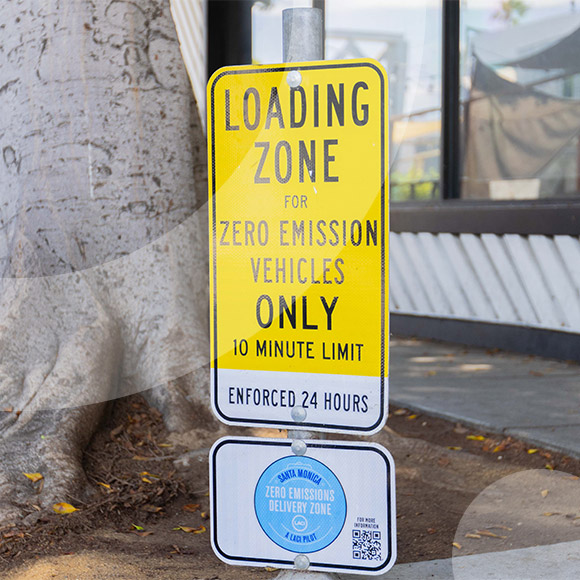Zero Emissions Delivery
Delivering zero emission strategies to reduce emissions from truck traffic.

Why prioritize zero emissions delivery?
With the growth of online shopping and e-commerce increasing, demands for same- or next-day delivery of goods have largely been met with dirty, diesel-powered vehicles. Exposure to goods movement-related pollution is a serious health hazard for those who live in communities where ports and warehouses are located and along the roads and freeways where trucks traverse.
LACI is tackling the problem of last-mile pollution through groundbreaking zero emission delivery zones.

LACI is tackling the problem of last-mile pollution through groundbreaking zero emission delivery zones.
Santa Monica Delivery Zone
In 2021, with the City of Santa Monica we deployed a voluntary Zero-Emissions Delivery Zone (ZEDZ), the first of its kind in the U.S. This innovative pilot provided priority curb access for zero emission delivery vehicles in select loading areas in the zone–located in a one-square mile voluntary area in the commercial activity core of Santa Monica. Technology from Automotus monitored and analyzed all vehicle activity in each curb zone while protecting privacy; collected anonymized data for studying impact on delivery efficiency, safety, congestion, and emissions; and made real-time parking availability data available to ZE Delivery Zone drivers.

City Climate Innovation Challenge forZero Emissions Delivery
Following the success of the Santa Monica delivery zone, LACI is now sharing its unique model with cities across the country to reduce congestion and emissions from the exploding e-commerce and goods movement through the City Climate Innovation Challenge for Zero Emissions Delivery.
The Challenge aims to accelerate the move to zero emissions delivery to reduce emissions from predominantly dirty, diesel trucks moving goods for the first mile (e.g., class 8 drayage trucks) to last mile (e.g., medium duty delivery trucks) predominantly impacting low income, disadvantaged communities with disproportionate pollution and congestion.
